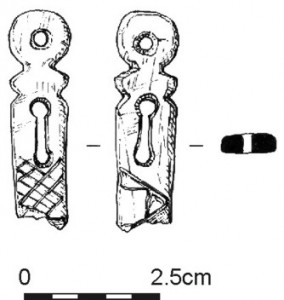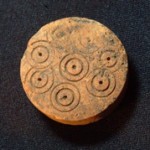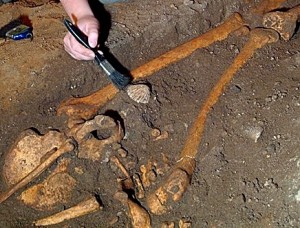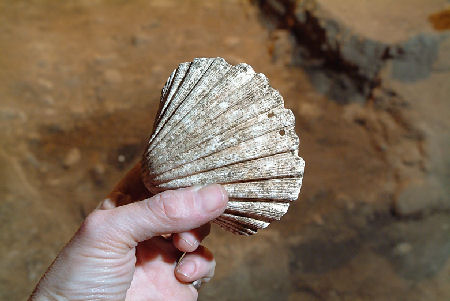Bone has been used from prehistory for carving both useful and decorative items because it is readily available and easy to work with, yet durable when finished. However, bone does not survive in acid soils, so finding carved bone objects in an archaeological dig is exciting. Quite a number of carved bone items were found during the archaeological dig below the former East Kirk, which included some utilitarian items such as part of a comb. Other items were more interesting.
The first illustration is a drawing, taken from the original in order to show the detail of the carving on both sides. The item has been broken at the bottom so exactly how long it was, or what it was used for, is uncertain. Given the context of a church, one possibility is that it was the ‘weighted end’ of a ribbon book mark, perhaps for marking a passage in a Bible.
The second item, however, is not exactly what would be expected in a church – a gaming piece! Indeed this was not the only distinctly secular item found – for example a number of small dice (about 3 or 4 mm only) was also found below what was in later years the kitchen. The rest is left to the imagination!!
During the archaeological excavation a large number of artefacts were uncovered. These require detailed study, evaluation and conservation. This costs money, but unless it is done there is a danger that they will be lost through deterioration. It is proposed to share some of the other artefacts through these posts over time.
The photographs are copyright Aberdeen Art Gallery & Museums Collections and are used with permission.


